企業(yè)網(wǎng)站建設(shè)基本步驟沈陽網(wǎng)站關(guān)鍵字優(yōu)化
引言
項(xiàng)目開發(fā)中我們有時(shí)會(huì)用到一些第三方付費(fèi)的接口,這些接口的每次調(diào)用都會(huì)產(chǎn)生一些費(fèi)用,有時(shí)會(huì)有別有用心之人惡意調(diào)用我們的接口,造成經(jīng)濟(jì)損失;或者有時(shí)需要對(duì)一些執(zhí)行時(shí)間比較長的的接口進(jìn)行頻率限制,這里我就簡單演示一下我的解決思路;
主要使用spring的aop特性實(shí)現(xiàn)功能;
代碼實(shí)現(xiàn)
首先需要一個(gè)注解,找個(gè)注解可以理解為一個(gè)坐標(biāo),標(biāo)記該注解的接口都將進(jìn)行訪問頻率限制;
package com.yang.prevent;import java.lang.annotation.*;/*** 接口防刷注解*/
@Documented
@Target({ElementType.METHOD})
@Retention(RetentionPolicy.RUNTIME)
public @interface Prevent {/*** 限制的時(shí)間值(秒)默認(rèn)60s*/long value() default 60;/*** 限制規(guī)定時(shí)間內(nèi)訪問次數(shù),默認(rèn)只能訪問一次*/long times() default 1;/*** 提示*/String message() default "";/*** 策略*/PreventStrategy strategy() default PreventStrategy.DEFAULT;
}
value就是限制周期,times是在一個(gè)周期內(nèi)訪問次數(shù),message是訪問頻率過多時(shí)的提示信息,strategy就是一個(gè)限制策略,是自定義的,如下:
package com.yang.prevent;/*** 防刷策略枚舉*/
public enum PreventStrategy {/*** 默認(rèn)(60s內(nèi)不允許再次請(qǐng)求)*/DEFAULT
}
下面就是aop攔截的具體代碼:
package com.yang.prevent;import com.yang.common.StatusCode;
import com.yang.constant.redis.RedisKey;
import com.yang.exception.BusinessException;
import com.yang.utils.IpUtils;
import org.aspectj.lang.JoinPoint;
import org.aspectj.lang.annotation.Aspect;
import org.aspectj.lang.annotation.Before;
import org.aspectj.lang.annotation.Pointcut;
import org.aspectj.lang.reflect.MethodSignature;
import org.springframework.data.redis.core.RedisTemplate;
import org.springframework.stereotype.Component;
import org.springframework.util.StringUtils;
import org.springframework.web.context.request.RequestAttributes;
import org.springframework.web.context.request.RequestContextHolder;
import org.springframework.web.context.request.ServletRequestAttributes;import javax.annotation.Resource;
import javax.servlet.http.HttpServletRequest;
import java.lang.reflect.Method;
import java.nio.charset.StandardCharsets;
import java.util.Base64;
import java.util.Objects;
import java.util.concurrent.TimeUnit;/*** 防刷切面實(shí)現(xiàn)類*/
@Aspect
@Component
public class PreventAop {@Resourceprivate RedisTemplate<String, Long> redisTemplate;/*** 切入點(diǎn)*/@Pointcut("@annotation(com.yang.prevent.Prevent)")public void pointcut() {}/*** 處理前*/@Before("pointcut()")public void joinPoint(JoinPoint joinPoint) throws Exception {// 獲取調(diào)用者ipRequestAttributes requestAttributes = RequestContextHolder.currentRequestAttributes();HttpServletRequest httpServletRequest = ((ServletRequestAttributes) requestAttributes).getRequest();String userIP = IpUtils.getUserIP(httpServletRequest);// 獲取調(diào)用接口方法名MethodSignature methodSignature = (MethodSignature) joinPoint.getSignature();Method method = joinPoint.getTarget().getClass().getMethod(methodSignature.getName(),methodSignature.getParameterTypes()); // 獲取該接口方法String methodFullName = method.getDeclaringClass().getName() + method.getName(); // 獲取到方法名Prevent preventAnnotation = method.getAnnotation(Prevent.class); // 獲取該接口上的prevent注解(為了使用該注解內(nèi)的參數(shù))// 執(zhí)行對(duì)應(yīng)策略entrance(preventAnnotation, userIP, methodFullName);}/*** 通過prevent注冊(cè)判斷執(zhí)行策略* @param prevent 該接口的prevent注解對(duì)象* @param userIP 訪問該接口的用戶ip* @param methodFullName 該接口方法名*/private void entrance(Prevent prevent, String userIP, String methodFullName) throws Exception {PreventStrategy strategy = prevent.strategy(); // 獲取校驗(yàn)策略if (Objects.requireNonNull(strategy) == PreventStrategy.DEFAULT) { // 默認(rèn)就是default策略,執(zhí)行default策略方法defaultHandle(userIP, prevent, methodFullName);} else {throw new BusinessException(StatusCode.FORBIDDEN, "無效的策略");}}/*** Default測(cè)試執(zhí)行方法* @param userIP 訪問該接口的用戶ip* @param prevent 該接口的prevent注解對(duì)象* @param methodFullName 該接口方法名*/private void defaultHandle(String userIP, Prevent prevent, String methodFullName) throws Exception {String base64StrIP = toBase64String(userIP); // 加密用戶ip(避免ip存在一些特殊字符作為redis的key不合法)long expire = prevent.value(); // 獲取訪問限制時(shí)間long times = prevent.times(); // 獲取訪問限制次數(shù)// 限制特定時(shí)間內(nèi)訪問特定次數(shù)long count = redisTemplate.opsForValue().increment(RedisKey.PREVENT_METHOD_NAME + base64StrIP + ":" + methodFullName, 1); // 訪問次數(shù)+1if (count == 1) { // 如果訪問次數(shù)為1,則重置訪問限制時(shí)間(即redis超時(shí)時(shí)間)redisTemplate.expire(RedisKey.PREVENT_METHOD_NAME + base64StrIP + ":" + methodFullName,expire,TimeUnit.SECONDS);}if (count > times) { // 如果訪問次數(shù)超出訪問限制次數(shù),則禁止訪問// 如果有限制信息則使用限制信息,沒有則使用默認(rèn)限制信息String errorMessage =!StringUtils.isEmpty(prevent.message()) ? prevent.message() : expire + "秒內(nèi)不允許重復(fù)請(qǐng)求";throw new BusinessException(StatusCode.FORBIDDEN, errorMessage);}}/*** 對(duì)象轉(zhuǎn)換為base64字符串* @param obj 對(duì)象值* @return base64字符串*/private String toBase64String(String obj) throws Exception {if (StringUtils.isEmpty(obj)) {return null;}Base64.Encoder encoder = Base64.getEncoder();byte[] bytes = obj.getBytes(StandardCharsets.UTF_8);return encoder.encodeToString(bytes);}
}
注釋寫的很清楚了,這里我簡單說一下關(guān)鍵方法defaultHandle:
1,首先加密ip,原因就是避免ip存在一些特殊字符作為redis的key不合法,該ip是組成redis主鍵的一部分,redis主鍵格式為:polar:prevent:加密ip:方法名
這樣就能區(qū)分不同ip,同一ip下區(qū)分不同方法的訪問頻率;
2,expire和times都是從@Prevent注解中獲取的參數(shù),默認(rèn)是60s內(nèi)最多訪問1次,可以自定義;
3,然后接口訪問次數(shù)+1(該設(shè)備ip下),如果該接口訪問次數(shù)為1,則說明這是這個(gè)ip第一次訪問該接口,或者是該接口的頻率限制已經(jīng)解除,即該接口訪問次數(shù)+1前redis中沒有該ip對(duì)應(yīng)接口的限制記錄,所以需要重新設(shè)置對(duì)應(yīng)超時(shí)時(shí)間,表示新的一輪頻率限制開始;如果訪問次數(shù)超過最大次數(shù),則禁止訪問該接口,直到該輪頻率限制結(jié)束,redis緩存的記錄超時(shí)消失,才可以再次訪問該接口;
這個(gè)方法理解了其他就不難了,其他方法就是給這個(gè)方法傳參或者作為校驗(yàn)或數(shù)據(jù)處理的;
下面測(cè)試一下,分別標(biāo)記兩個(gè)接口,一個(gè)使用@Prevent默認(rèn)參數(shù),一個(gè)使用自定義參數(shù):
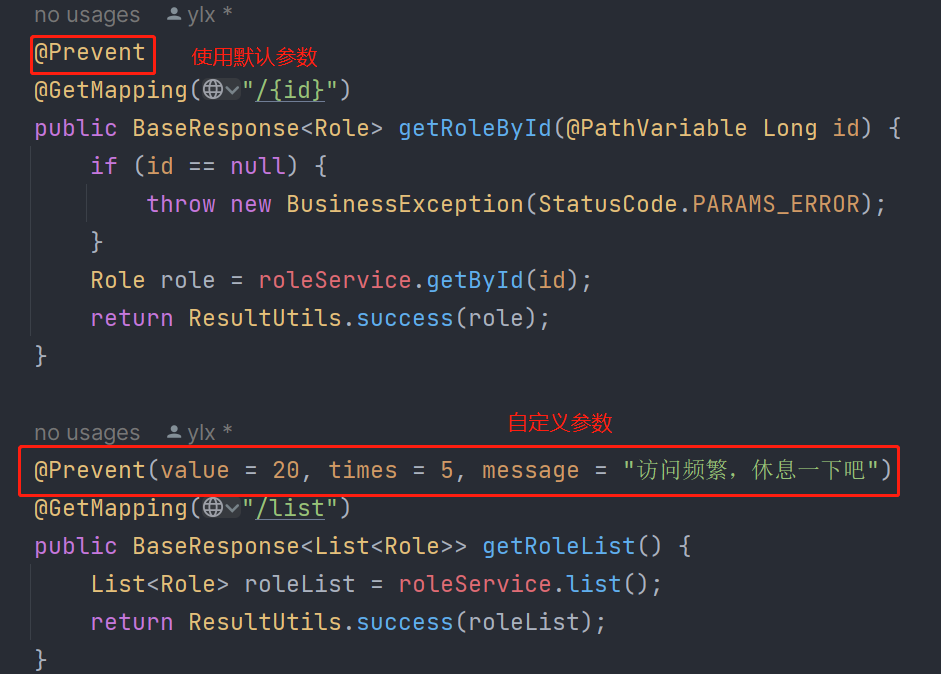
調(diào)用getToleById接口,意思是60s內(nèi)只能調(diào)用該接口1次:
第一次調(diào)用成功,redis鍵值為1
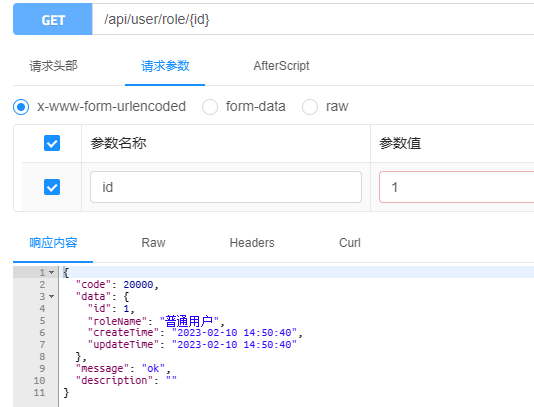
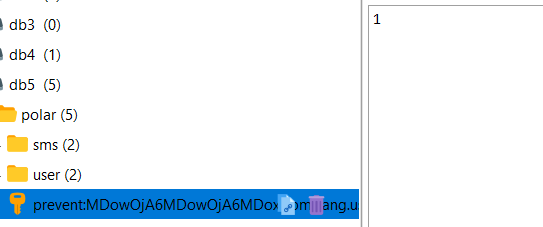
第二次失敗,需要等60s
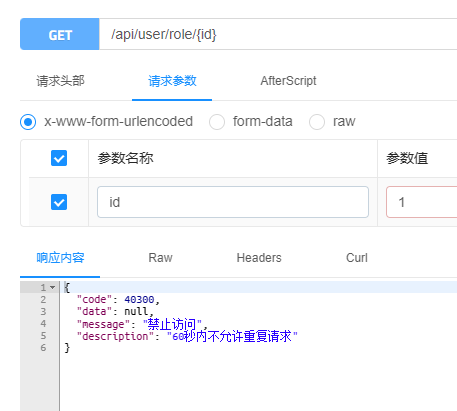
redis鍵值變成了2
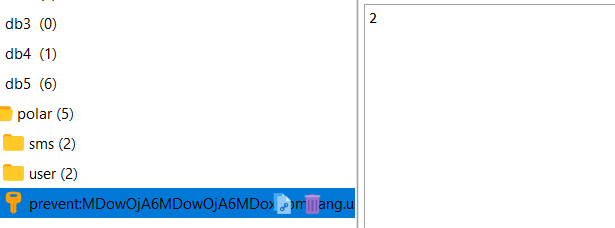
getRoleList是自定義參數(shù),意思是20s內(nèi)最多只能訪問該接口5次:
未超出頻率限制
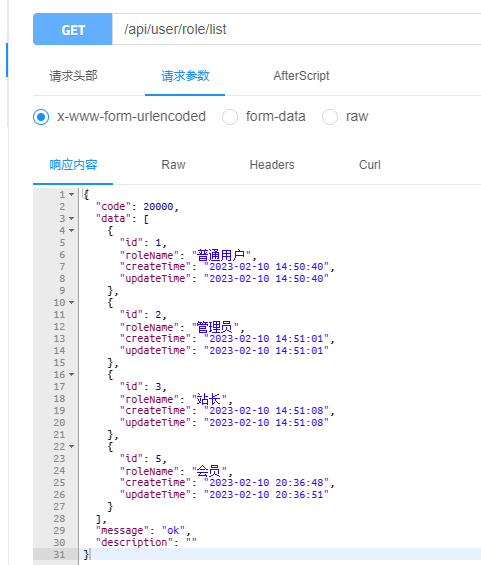
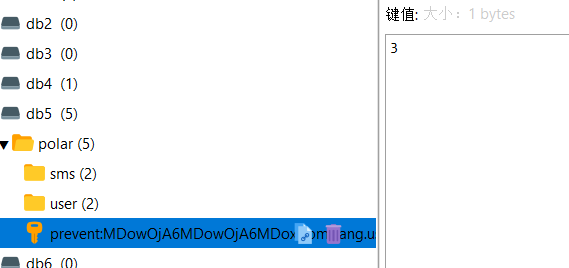
超出頻率限制
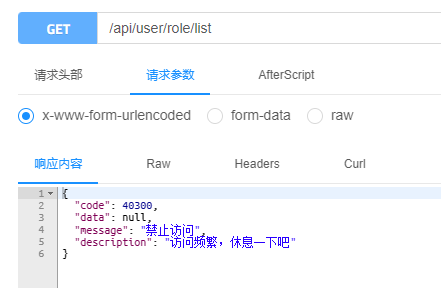
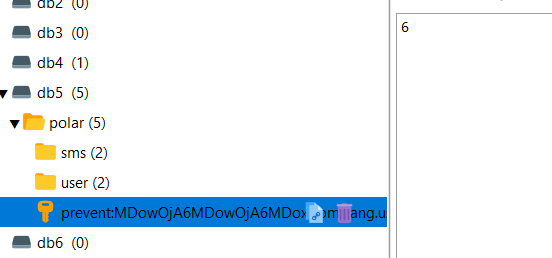
總體流程就是這樣了,aop理解好了不難,也比較實(shí)用,可以在自己項(xiàng)目中使用;
